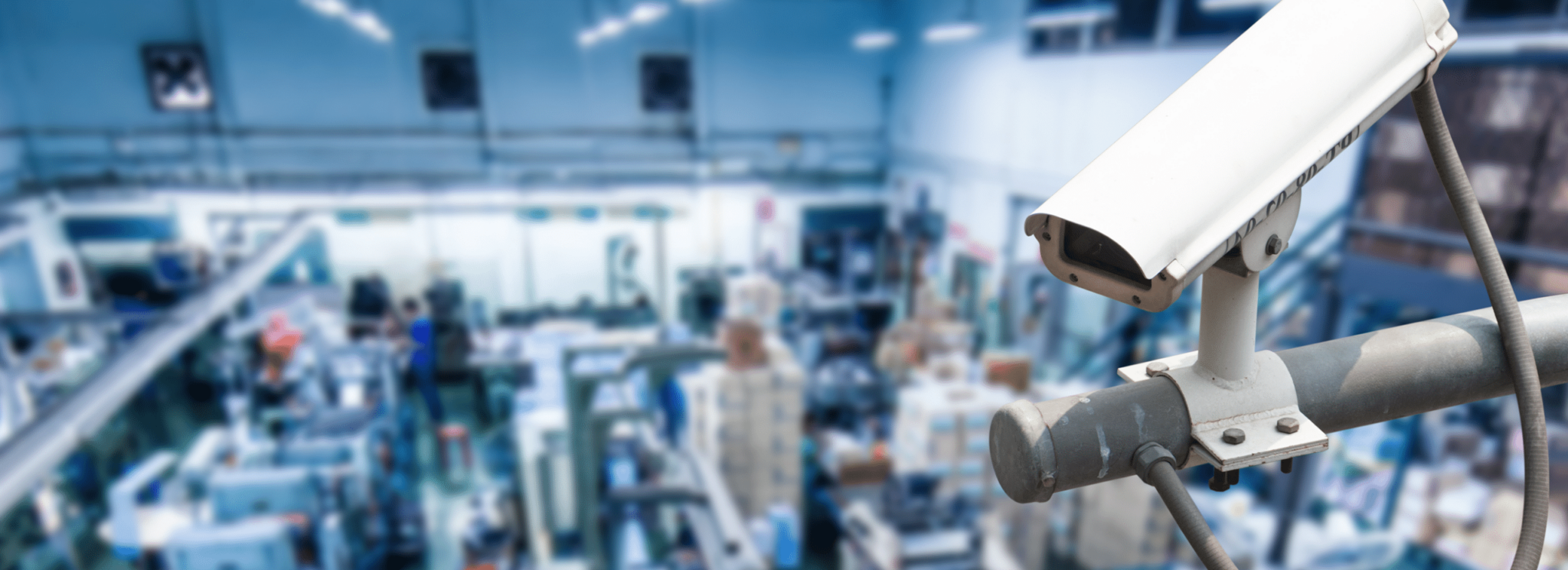The Occupational Safety and Health Administration (OSHA) has a mission to ensure employees work in a safe and healthy environment. It does this by setting and enforcing standards. Hence, industrial manufacturing facilities must prioritize safety, but not just the safety of employees. It also must consider the safety of the people and neighborhoods surrounding the facility.
The administration also offers training, outreach, education, and assistance. All employers including those in industrial manufacturing must comply with all applicable OSHA standards and the General Duty Clause of the OSH Act. In short, the clause states employers will provide an environment free from hazards that cause or likely to cause physical harm or death to employees.
The Need to Secure an Industrial Facility
In addition to prioritizing safety, industrial facilities must put an equal emphasis on protecting the facility’s intellectual assets with physical security. Industrial security is a growing market due to the increasing number of workplace violence incidents. OSHA defines workplace violence as “act or threat of physical violence, harassment, intimidation, or other threatening disruptive behavior that occurs at the work site.”
Unfortunately, acts of violence and injuries are the third-leading cause of fatal occupational injuries in the U.S. OSHA’s workplace violence overview references the Bureau of Labor Statistics data in which out of the 5,147 fatal workplace injuries in 2017, almost 500 involved a person intentionally injuring other people. That only includes the reported ones. Apparently, many go unreported.
The global economy and regulatory requirements demand the industrial sector treat physical security with equal focus as safety and productivity. The purpose of industrial security is to detect, defend, and deter threats to the facility. These threats could be workplace violence, theft, vandalism, trespassing, and other factors that jeopardize the facility’s effectiveness.
That’s because many industrial facilities do not have strong physical security programs in place. It’s not just about adding layers to your physical security but also raising employee awareness. You can have all the right security technologies in place and yet, it can all come crashing down based on one employee’s mistake.
4 Steps to Industrial Security
The most effective security programs comprise multiple layers. The more layers there are, the harder it is to breakthrough. Here are four steps to strengthen your physical security for your industrial or manufacturing facility.
1. Hire a Security Consultant
You would not have human resources or marketing department manage your company’s cybersecurity. IT does not have the knowledge you need to design an effective industrial security program.
If you want to do industrial security correctly, bring in a security professional with experience in industrial and manufacturing projects. Every sector has different security requirements and best practices. Even two industrial facilities would not have identical security setups.
A security consultant with experience in industrial security knows how to customize and optimize security based on a single facility’s needs and requirements. Look for someone who has credentials such as Certified Security Consultant (CSC), Certified Protection Professional, or Physical Security Professional.
2. Conduct a Security Risk Assessment
The security consultant will want to do a security risk assessment. This looks at what security solutions you have in place and identifies potential areas of vulnerability. During the assessment, the security consultant will analyze crime reports to see what kind of crimes occur near your industrial facility’s property.
For example, go to the FBI’s National Incident-Based Reporting System (NIBRS) interactive map which has data from local police departments. There, you can look at the crime data for the neighborhood where the building resides. The system can show you the crime rate and the types of crime affecting the neighborhood around the property.
Don’t forget about examining the community’s weather patterns and history to uncover potential risks. These include tornadoes, hurricanes, earthquakes, fires, and other nature-made disasters.
3. Create a Security Plan
The purpose of a security plan is to describe the layout of the property to help identify potential perimeter security needs. It will also act as a visual guide in highlighting vulnerable areas. The plan will contain details regarding security requirements for the interior and exterior. It will delve into the all-important process of regular security training for employees.
You pick the perfect security technology. However, it only takes one employee to let an outsider piggyback into the facility and bring down security. People and processes are a critical part of industrial security’s success. The plan will also list the role of the employee responsible for overseeing the security of the facility and its property. This person may not be a security expert, but they’ll be the contact point.
If the facility, for example, installs remote video surveillance, then that employee will be the contact whenever something suspicious comes up. That’s the person — or a designated backup — the remote video surveillance monitoring operator will contact when there’s a concern.
The employee is also responsible for verifying new employees receive security training when onboarding and current employees receive at least a yearly refresher. The point of the role is to place ownership of security-related roles and tasks with one person. That person can delegate as needed.
4. Design a Multilayered Industrial Security Program
Security is a program, not a project. This means you don’t install security and say you’re done. If that were the case, companies would be using ancient security technologies that would not deter crime or get the job done.
When an organization treats security as a program, it becomes a part of the organization’s DNA and processes. Security will evolve as new technologies come out and the community’s dynamics change. Training employee is essential to its success.
Security should be included as soon as a company sets up a shop in the facility. Workers have to commute from home, and that means the facility will need a parking lot or garage. Too often, companies design parking garage security as an afterthought.
Smarter companies think about parking security from day 1 because the FBI Crime Data Explorer reveals parking lots as the No. 3 in location for violent crime in 2017. You can avoid many of the parking lot problems by proactively designing with parking lot security in mind. It’s hard to make structural changes after the facility goes live.
The more entrances and exits you have, the harder it will be to protect the building. The key is to limit the number of entry points while following fire code regulations. For entrances, verify they’re properly lit and monitored on security cameras.
As you design the entry and exits, think about how visitors, vendors, and parcel delivery will enter the facility. You want few barriers for them to enter without weakening security.
The Most Effective Industrial Security Technology
Thanks to advancements in industrial security technology, more cost-effective solutions are available that will yield a faster ROI on your security. An option that works well in industrial facilities is remote video surveillance.
Video surveillance offers round-the-clock coverage across the entire property, both interior and exterior, including parking and the loading zones. When you opt for live video surveillance, you gain a proactive security solution that can deter crime before it happens. Standard alarms are reactive solutions. They don’t respond until after something transpires.
The important factor in this technology is monitoring. If no one watches the cameras, it turns the technology into passive security and it can potentially turn into a liability issue. Passive security will not likely prevent crime. When you don’t have artificial intelligence partnering with humans to watch the cameras, then it could become a liability problem because it gives people a false sense of security.
You can actually lower liability with remote video surveillance. That’s because it relies on video analytics and human intelligence to identify and analyze suspicious activity in real time. As soon as AI notices a problem arises, it alerts the trained monitoring operator who can issue a warning to the trespasser on the audio speaker. By the way, the operator is off-site in a safe place and won’t feel threatened.
If the suspect does not respond to the operator’s warning, then the operator can call law enforcement and stay in touch while tracking the intruder’s movements.
Monitored video cameras can watch the entire property simultaneously. It can also monitor areas where it’s not safe for people to go like on the roof and in certain areas of the building because of the machinery. Security cameras can monitor these areas.
Video surveillance can do more than deter crime. It can identify potential hazards and problems. The operator will alert the point of contact at the industrial facility. Best of all, you can take a unified approach to protection with an integrated security system
that includes video surveillance, an access control system, and other perimeter security features.
Our security experts can give you the support you need to evaluate your property and outline a right-sized security solution. In choosing to work with us, you’ll have access to security professionals who have experience in securing industrial and manufacturing facilities. Have questions about physical security for industrial properties? Contact us.

